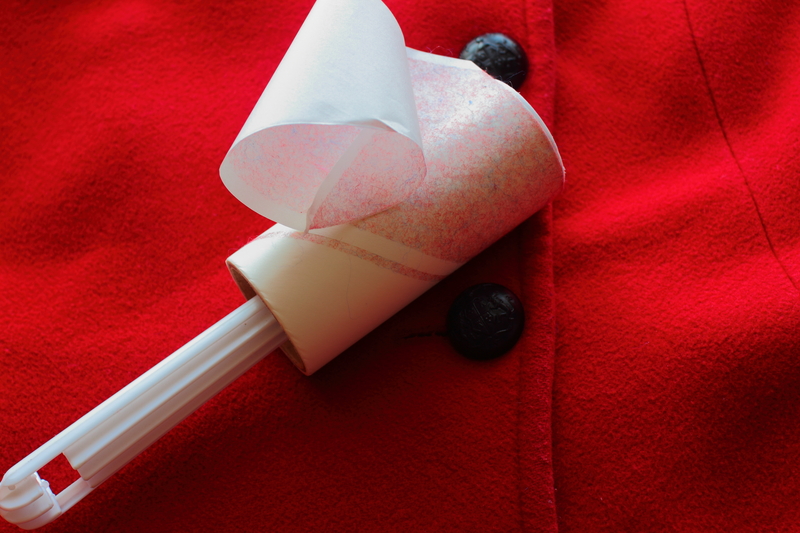Achieve Immaculate Curtains with These Simple Steps
Posted on 19/06/2025
Achieve Immaculate Curtains with These Simple Steps
Do your curtains look dull, dusty, or stained? Achieving immaculate curtains doesn't have to be a challenge. In fact, you can transform your window treatments into a highlight of your decor with a few easy and consistent habits. In this detailed guide, you'll learn all the keys to getting your curtains spotless with minimal effort, from cleaning methods to maintenance tricks and styling tips.
Why Clean Curtains Matter
Curtains are more than just decorative fabrics -- they're essential for privacy, light control, and even influencing room temperature. But over time, dust, allergens, and odors can accumulate within their fibers, leading to:
- Compromised indoor air quality
- Dull or faded appearance
- Stubborn stains and permanent discoloration
- Unpleasant odors lingering in your home
Regular maintenance and proper washing techniques can help keep your drapes fresh, vibrant, and hygienic, ensuring your home looks and feels immaculate.

Preparations: Understand Your Curtain Fabric
The first and most important step towards sparkling curtains is identifying your curtain material. Not all fabrics are created equal -- what works wonders for cotton may ruin silk. Check the care label or consult the manufacturer's instructions before washing or treating. The most common curtain fabrics include:
- Cotton - Durable, often machine washable
- Linen - Lightweight, may require gentle cycles or handwashing
- Silk - Delicate, often requires dry cleaning
- Polyester - Easy-care, machine or hand washable
- Velvet - Thick and luxurious, may need special cleaning methods
Tip: Always spot test any detergent or cleaner on a small, hidden area of your curtain first!
Step 1: Regular Maintenance and Dusting
Prevention is better than cure. Dust and dirt naturally settle onto your curtains, and the longer you wait to clean them, the harder it becomes. Make regular maintenance part of your routine for immaculate drapes.
How to Dust Curtains Effectively
- Weekly Vacuuming: Use a vacuum cleaner with an upholstery attachment. Start from the top and carefully work your way down to remove dust, pet hair, and cobwebs.
- Shake Outdoors: Every couple of weeks, take down your curtains and give them a good shake outside to dislodge dust that's settled deep in the fabric.
- Use a Lint Roller: For lighter materials or delicate fabrics, a lint roller or a microfibre cloth can gently pick up dust without causing damage.
Step 2: Treating Stains on Curtains
Spills and stains are inevitable, especially if your curtains are in high-traffic areas. It's crucial to address stains promptly for best results.
Quick Stain Removal Process
- Blot Immediately: Use a clean, white cloth or paper towel to blot (not rub) the stain. This absorbs most of the liquid and prevents spreading.
- Apply a Mild Detergent Solution: Mix a teaspoon of gentle laundry detergent with a cup of lukewarm water. Dab onto the stain using a soft sponge or cloth.
- Rinse: Use a clean damp cloth to remove soap residue.
- Air Dry: Let the area air dry completely before re-hanging or exposing to sunlight, which could set a stain.
Note: For oil-based or tough stains, a specialized stain remover may be necessary. For delicate fabrics (like silk or velvet), consult a professional cleaner to avoid damage.
Step 3: Washing Your Curtains
Deep cleaning your curtains a few times a year can eliminate built-up grime, odors, and stubborn stains, restoring their original beauty. There are several ways to wash curtains, depending on their fabric:
Machine Washing Curtains
- Remove all hardware (hooks, rings, etc.).
- Shake curtains outside to release loose dust.
- Set your washing machine to a gentle cycle with cold or lukewarm water and a mild detergent.
- Wash curtains separately to avoid overloading or snagging.
- If possible, place curtains in a laundry bag to prevent tangling.
Pro Tip: Don't overwash! Twice yearly is often enough unless exposed to heavy pollution or allergens.
Hand Washing Curtains
- Fill a bathtub or large basin with lukewarm water and a small amount of gentle detergent.
- Submerge the curtain, gently agitating them by hand (do not wring or twist fragile fabrics).
- Rinse thoroughly with fresh cold water.
- Gently squeeze (not wring) out excess water before drying.
Dry Cleaning Curtains
Certain materials -- like silk, velvet, brocade, or heavily lined curtains -- should always be dry cleaned to prevent damage or shrinkage. If in doubt, check the label for the "dry clean only" symbol, or consult your local professional cleaners for advice.
Step 4: Drying and Rehanging Curtains
The way you dry your curtains can greatly affect their appearance, preventing unsightly creases or shrinkage.
Best Practices for Drying
- Air Dry: Hang curtains outdoors or in a well-ventilated space, preferably on a strong washing line or sturdy rod. This reduces wrinkles and preserves fabric integrity.
- Machine Dry: Only tumble dry curtains labeled as safe for dryers. Always use a low-heat or no-heat (air fluff) setting.
- Iron Carefully: If curtains are wrinkled, iron them on the recommended setting for the fabric. Alternatively, use a garment steamer to relax creases while the curtains are hanging.
Rehanging Tips
- Re-hang curtains while still damp for a smoother, wrinkle-free finish.
- Gently pull the fabric straight and reattach hooks or rings as needed.
- Allow them to fully dry in place, which helps the curtains regain their proper shape and drape.
Step 5: Maintaining Immaculate Curtains
After your curtains are sparkling clean, establish a simple routine to keep them immaculate for months to come:
- Weekly Dusting: As outlined earlier, use a vacuum or lint roller regularly.
- Avoid Moisture: Prevent dampness by ensuring good airflow near windows and doors, especially in kitchens and bathrooms.
- Protect from Sunlight: Direct sunlight can bleach and weaken fabric over time. Use blinds or rotate your curtains periodically.
- Deodorize Naturally: Lightly spritz with linen spray or hang your curtains outdoors in fresh air to refresh scents.
- Attend to Spills Immediately to avoid long-term stains.
Dealing With Common Curtain Challenges
- Pet Hair: Use a damp rubber glove or pet hair remover before washing to capture fur stuck to fabric.
- Allergies: For those sensitive to pollen, dust mites, or pet dander, aim for more frequent curtain cleaning using hot water if the fabric allows.
- Wrinkles: Hang the curtains while still slightly damp and use a steamer or iron for a smooth finish.
Enhancing and Styling Immaculate Curtains
Once you've mastered the art of achieving spotless curtains, take things a step further to make them a true focal point in your home.
- Add Tiebacks or Holdbacks: These not only allow more light into your space but also showcase the curtain fabric for added elegance.
- Layer With Sheers: Pairing your main curtains with sheers provides versatility, allowing for both privacy and gentle light control.
- Replace or Clean Hardware: Dust and polish curtain rods, rings, and hooks for a completely tidy look.
- Accentuate With Accessories: Consider tassels, trims, or decorative rods to complement your drapery and interior style.

Common Questions About Getting Pristine Curtains
How often should you clean curtains?
Light dusting or vacuuming should be done weekly. Deep cleaning varies by room -- in bedrooms or living spaces, every 3-6 months is ideal, while kitchens or high-traffic zones might require more frequent washing.
Can I machine-wash blackout or thermal curtains?
Many blackout or thermal curtains require special care. Always check the manufacturer's instructions, as some contain coatings or foams that may deteriorate in the wash. If unsure, spot clean or consult a professional.
What are the best products to use for curtain cleaning?
- Mild, fragrance-free laundry detergents designed for delicates
- White vinegar (diluted) for deodorizing and brightening whites
- Baking soda for odor removal or as a gentle spot cleaner
- Lint rollers & microfibre cloths for regular maintenance
How do you remove mildew or mold from curtains?
Act quickly. Brush off any visible mold outside using a stiff brush. Then soak in a solution of 1 part white vinegar to 4 parts water before washing as usual. For severe cases or delicate fabrics, professional cleaning is recommended.
Summary: Bringing Out the Best in Your Curtains
Achieving immaculate curtains is simple when you combine consistent care, the right cleaning techniques, and a little attention to detail. Whether your drapes are silk, cotton, or synthetic, following these expert tips ensures they always look stunning. Prioritize gentle cleaning, act fast on stains, and embrace effective maintenance habits to keep your curtains as fresh as the day you hung them.
Remember, immaculate curtains set the tone for a welcoming and beautiful home. With these easy steps, you'll enjoy spotless, stylish window treatments for years to come.




